Scottish election 2021: Ten seats to watch
Which local contests might tell the story of the Scottish Parliament election and give an indication of the national picture?

Dumbarton
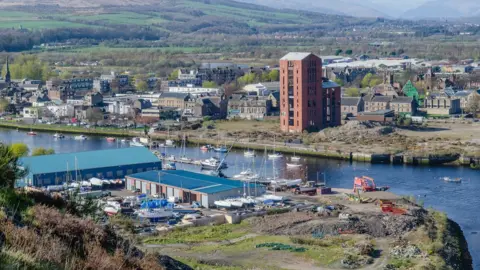 Getty Images
Getty Images2016 election: Labour hold (0.3% majority)
Target for: SNP
Contestants: Jackie Baillie (Lab), Maurice Corry (Con), Andy Foxall (Lib Dem), Toni Guigliano (SNP), James Morrison (ind), Andrew Muir (ind), Jonathan Rainey (Libertarian)
Dumbarton has been held by Scottish Labour's deputy leader Jackie Baillie since 1999 - one of a handful of constituencies which have been represented by the same MSP for the entire lifetime of the parliament.
However, this is the most marginal seat in Scotland, with a majority of just 109 votes in 2016. The SNP have been creeping ever-closer, and the constituency is now a lonely red dot in a sea of yellow on the electoral map.
Ms Baillie has been reasonably high-profile of late due to her role in the Holyrood inquiry committee and a stint in charge of Scottish Labour while the party sought a new leader.
Now Anas Sarwar is in charge, Labour has designs on retaking second spot from the Conservatives. Whether or not it can hang on to the seats it already has will be a big indication of how successful it will be.

Aberdeenshire West
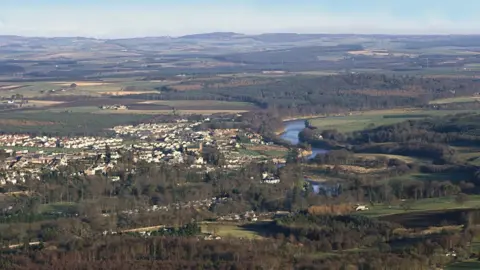 Getty Images
Getty Images2016 election: Conservative gain from SNP (2.6% majority)
Target for: SNP
Contestants: Andrew Brown (Lab), Rosemary Bruce (Lib Dem), Alexander Burnett (Con), Fergus Mutch (SNP)
This constituency has a complex history, having been put together from bits of Gordon and West Aberdeenshire and Kincardine in 2011.
Both were originally Lib Dem strongholds, although Gordon was later home to SNP First Minister Alex Salmond in 2007 - but the "new" constituency was taken from the SNP by the Conservatives in 2016.
Mr Burnett's lead over the SNP in 2016 was only 900 votes, but the Tories took the Westminster equivalent seat in 2017 and 2019.
The north east and the south of Scotland are the key battlegrounds between the Conservatives and the SNP, so the outcome of the race here could be a bellwether for the rest of the region - and the election as a whole.

Edinburgh Central
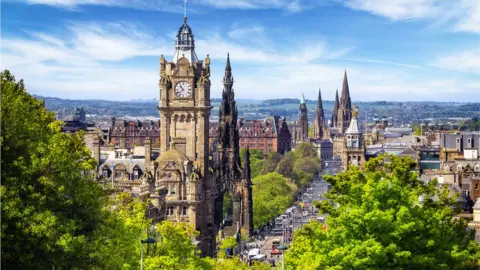 Getty Images
Getty Images2016 election: Conservative gain from SNP (2.9% majority)
Target for: SNP, Labour
Contestants: Bonnie Prince Bob (ind), Scott Douglas (Con), Alison Johnstone (Green), Maddy Kirkman (Lab), Tam Laird (Scottish Libertarian Party), Donald Mackay (UKIP), Angus Robertson (SNP), Bruce Wilson (LD)
Taken by Ruth Davidson in 2016 by a margin of just 610 votes, Edinburgh Central is widely seen as being up for grabs in 2021 as the former Scottish Tory leader departs Holyrood for the House of Lords.
There was much intrigue over the SNP selection contest, with former deputy leader Angus Robertson ultimately winning the nomination after Joanna Cherry claimed her bid had been "hobbled" by a rule-change from party HQ.
The Conservatives are not going to give it up without a fight, but the seat could even be a three-way contest with Labour not a million miles behind in third.
The constituency is a complicated contest, having been a Labour-Lib Dem marginal up until 2011, and featuring candidates from all five major parties - Alison Johnstone took a not inconsiderable 13.6% of the vote for the Greens in 2016.
Which way and to what extent the unionist and pro-independence votes split between the Tories and Labour, and the SNP and Greens, could ultimately prove decisive.

Moray
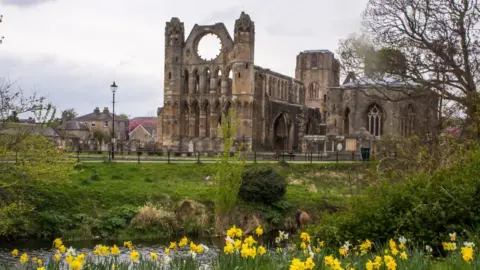 Getty Images
Getty Images2016 election: SNP hold (8.6% majority)
Target for: Conservatives
Contestants: Tim Eagle (Con), Jo Kirby (Lab), Richard Lochhead (SNP), Sheila Ritchie (Lib Dem), Robert Stephenson (UKIP)
Moray is one of the SNP's more marginal seats - in relative terms - despite being held by long-serving government minister Richard Lochhead since 2006.
The equivalent Westminster seat was captured by the Conservatives in 2017, and held again in 2019 by Scottish Tory leader Douglas Ross.
While Mr Ross is not on the constituency ticket for this election - preferring a position atop the party's regional list and thus a more or less guaranteed seat - he is likely to spend a decent amount of time campaigning in his back yard.
It also means the seat is a prime location for a potential visit from Prime Minister Boris Johnson, and the local contest might ultimately prove to be a mini-referendum on the Conservative campaign and Mr Ross's leadership.
This puts a lot of pressure on local candidate Tim Eagle, who still faces a stiff task in dethroning Mr Lochhead, an experienced campaigner who has been at Holyrood since 1999.


East Lothian
 Getty Images
Getty Images2016 election: Labour hold (3% majority)
Target for: SNP
Contestants: Euan Davidson (Lib Dem), Craig Hoy (Con), Paul McLennan (SNP), Martin Whitfield (Lab)
This seat is one of only three Labour defences in Scotland, having been held since 2007 by the party's former leader Iain Gray.
With his retirement, the SNP may see an opportunity to jump in. The corresponding Westminster seat has bounced back and forth between Labour and the SNP, swinging back to the latter in 2019.
However the fly in the ointment is that the candidate they managed to get elected in that race, Kenny MacAskill, has now defected to Alex Salmond's new Alba Party.
In theory, that should not affect the Holyrood contest. Mr MacAskill is not giving up his Westminster seat, and is a list candidate only for Alba. But the shadow of the former justice secretary will be cast over this race regardless.
Labour had already nominated Martin Whitfield - the MP ousted by Mr MacAskill - as their candidate for the Scottish Parliament seat.
And SNP activists may face a challenge pushing their candidate, Paul McLennan, while the party is openly attacking the man they pitched to local voters just 18 months ago.

Eastwood
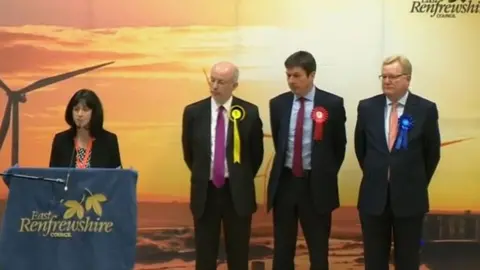
2016 election: Conservative gain from Labour (4.5% majority)
Target for: SNP, Labour
Contestants: Jackson Carlaw (Con), Tahir Jameel (Lib Dem), David Macdonald (ind), Janice Mackay (UKIP), Colm Merrick (SNP), Katie Pragnell (Lab)
Eastwood is one of Holyrood's closest three-way marginals, with the Conservatives, SNP and Labour all polling over 30% in 2016.
That year, Tory Jackson Carlaw took the seat from Labour's Ken Macintosh at the fourth attempt. Mr Macintosh was narrowly beaten into third place by the SNP, but returned to Holyrood via the West of Scotland list and went on to become Presiding Officer.
In the meantime, Mr Carlaw went on to become Scottish Conservative leader - for six months. Will he face a similarly tight contest to return to the Tory back benches at Holyrood?
The equivalent Westminster seat, Renfrewshire East, also tends to be a three-horse contest - having bounced from Labour in 2010 to the SNP in 2015, to the Tories in 2017 and back to the SNP again in 2019.

Glasgow Southside
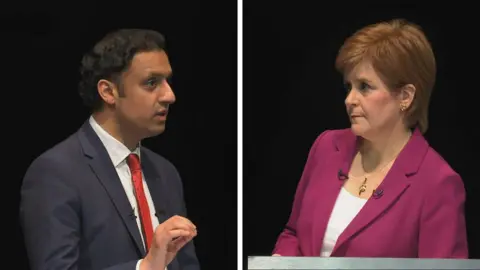
2016 election: SNP hold (38.5% majority)
Target for: Labour
Contestants: Carol Ann Dobson (Freedom Alliance), Greg Energy Adviser (ind), Carole Louise Ford (Lib Dem), Jayda Fransen (ind), Deek Jackson (Liberal Party), Anas Sarwar (Lab), Nicola Sturgeon (SNP), Kyle Thornton (Con)
There will no doubt be enormous interest in Glasgow Southside, given it is being contested by two party leaders - the SNP's Nicola Sturgeon and Labour's Anas Sarwar.
However, the SNP's lead in the area is enormous: Ms Sturgeon won considerably more votes than every other candidate combined in 2016. It is the SNP's safest seat in a city where the party has swept every constituency in both Holyrood and Westminster contests.
It would take a swing of historic proportions for Mr Sarwar to come close to unseating the first minister. His one hope may lie in the fact that turnout was low in 2016 - less than half the electorate showed up on the day, so the Labour leader might hope to tempt out some previous non-voters.
Despite the steep odds of an upset, the result here may still be an interesting one. The SNP are putting Nicola Sturgeon's leadership front and centre in their campaign - the extent to which voters are convinced by this approach in the first minister's own back yard may be indicative of the party's fortunes overall.

SIGN UP FOR SCOTLAND ALERTS: Get extra updates on BBC election coverage

Perthshire South & Kinross-shire
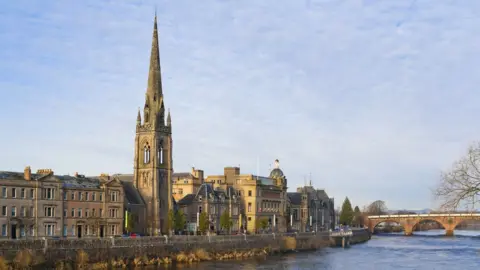 Getty Images
Getty Images2016 election: SNP hold (4% majority)
Target for: Conservatives
Contestants: Julia Brown (Lib Dem), Jim Fairlie (SNP), Janine Rennie (Lab), Liz Smith (Con)
SNP stalwart Roseanna Cunningham has represented this patch of Perthshire since the beginning of the Scottish Parliament, but is stepping down in May.
She leaves it as the party's most vulnerable seat in Scotland, with a 4% majority, and it is a key target for the Tories.
The Westminster equivalent has bounced between the SNP and Conservatives at the last three Westminster contests - including two years where the MP was Tasmina Ahmed Sheikh, now an Alba Party candidate on the regional list - although prior to that it was held by Labour.
Labour and the Lib Dems were 10,000 votes behind the other parties in the Holyrood contest of 2016 though, and this is likely to be a straight contest between experienced Tory campaigner Liz Smith and the SNP's Jim Fairlie, who hopes to continue Ms Cunningham's legacy.

Airdrie and Shotts
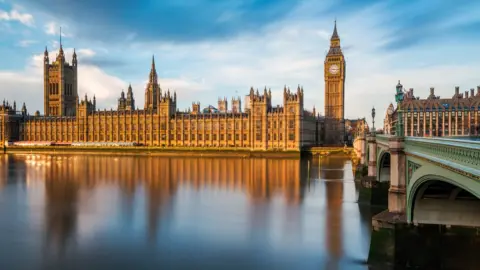 Getty Images
Getty Images2016 election: SNP hold (23.3% majority)
Target for: Labour
Contestants: John Cole (Lib Dem), Jimmy Dowson (ind), Neil Gray (SNP), Ross Lambie (Con), Richard Leonard (Lab)
Airdrie and Shotts has been held fairly comfortably for the SNP by Alex Neil since 2011. The former health secretary is retiring at this election though, and the man who wants to replace him - Neil Gray - has resigned from the corresponding Westminster seat in a bid to do so.
That means there will be a Westminster by-election in Airdrie and Shotts too. That poll is taking place a week after the Holyrood one - but given that Labour came within 200 votes of taking the seat in 2017, they may pour resources into the area.
In the Holyrood contest, they are represented by Richard Leonard - who has gained some profile since 2016 by becoming and later quitting as Scottish Labour leader.
Mr Gray meanwhile has gone "all in" and put his future on the line in his bid to win the seat. It will be interesting to see what impact the Westminster contest has on the Holyrood one - and vice versa.

North East Regional List
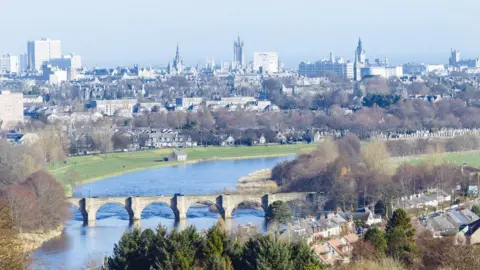 Getty Images
Getty Images2016 election: 4 Con, 2 Lab, 1 Lib Dem
Target for: SNP, Alba, Green
Contestants: Abolish the Scottish Parliament, Alba, All for Unity, Independent Green Voice, Geoffrey Farquharson (ind), Freedom Alliance, Laura Marshall (ind), Reform UK, Restore Scotland, Scottish Conservatives, Scottish Family Party, Scottish Greens, Scottish Labour, Scottish Lib Dems, Scottish Libertarian Party, SNP, Scottish Renew, UKIP
No, this is not a constituency. But this is an election where there is greater interest than ever in the "other" Holyrood ballot paper, for the regional lists.
In short, on the list people back a party rather than an individual candidate, with the system seeking to "top up" the representation of parties with a lot of support but little success in the winner-takes-all constituency contests.
The North East is an example of an area where the SNP did so well in 2016 in terms of constituencies that it was unable to win any list seats. Meanwhile the Conservatives only won one constituency, but were rewarded for strong local support with four list seats.
This is where the swings and roundabouts of the system come into play. If the Tories were to gain any constituencies in the area - as they did in the 2017 general election - they would need a strong showing on the list ballot so as not to lose seats out the back door.
The SNP will chiefly be hoping to gain back the one constituency they lost last time, but won't want to leave anything to chance in terms of list seats.
Labour won zero local constituencies in 2016, but could make gains on the list if they were to improve their showing; similarly the Greens were only 3,000 votes behind the Lib Dems last time out, and might push to pick up a seat here for the first time.
Meanwhile, this is the contest where Alex Salmond's name will actually be on the ballot paper, atop the Alba Party list. If his new vehicle is to turn words into deeds and grab some seats, they will need to start here - which means every other party will be eyeing the arithmetic and hoping not to be edged out.

- BASICS: A really simple guide to the election
- POLICIES: Who should I vote for?
- POLLS: 'Intense battle' for every vote
- PODLITICAL: Updates from the campaign

